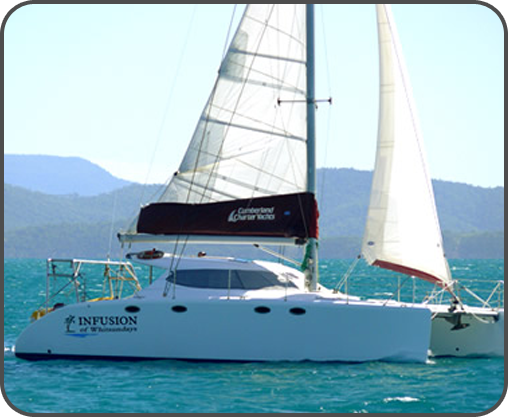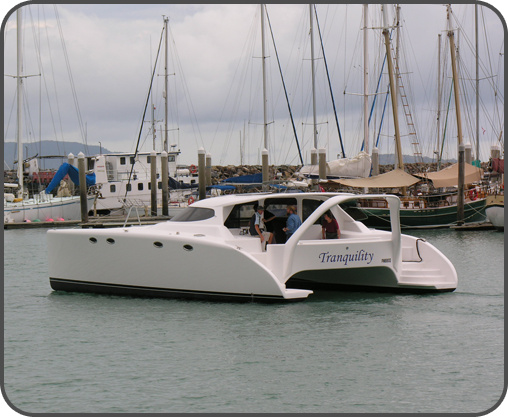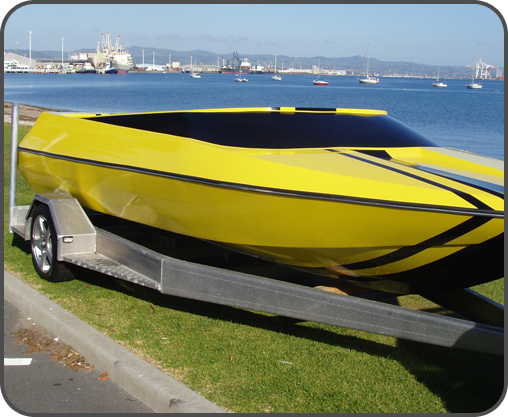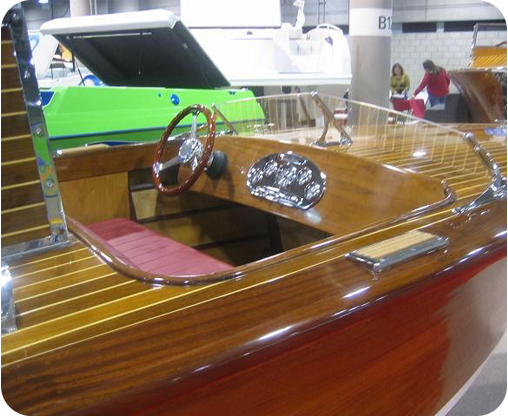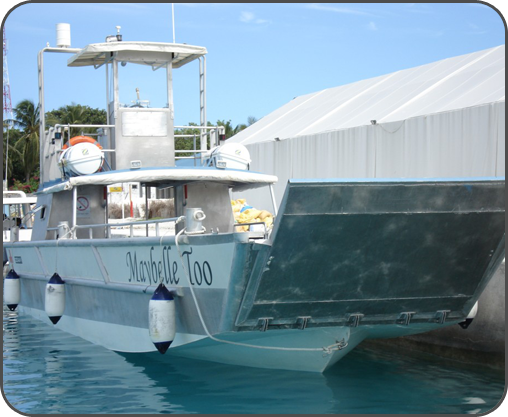Power Boat Hull Types >> DISPLACEMENT HULL
Starting at the Displacement end of the range, these were the first to be developed and to go back to the beginning of time; the original log canoe and even the ark (as far as we know) were all displacement hulls.
Heavy Displacement - this type includes such craft as tugs and deep sea trawlers. If you study these boats in profile you will notice that the stern rises above waterline. The mid section of the hull is very full and the midsection is deep in the water. The chine and buttock lines will reveal the full bellied shape usually present in this type of hull. The heavy displacement hull has to be able to carry great loads and in the case of tugs, be able to get a great grip on the water in order to do its job properly. The 'hull speed' of this type of vessel is generally less than that of other types.
Medium Displacement - these hulls include most regular work boats, general fishing boats and pleasure boats where speeds of 1.34 times the square root of the water line length (or less) are sufficient to fulfill their operating requirements. For instance let us consider a 40 ft / 12.19 M, LOA. motor cruiser with a waterline length of 36 ft / 10.97 M, the square root of the waterline is 6 so multiply this by 1.34 and you arrive at a potential speed of just over 8 knots / 14.8 kmh. This is an economical speed for this vessel taking into account power required and fuel used to drive the vessel at 'hull speed'. Medium displacement vessels can only exceed the 1.34 rule by adding excessive amounts of power. If you already own an engine that has more horsepower than required to fall within the 1.34 calculation, then consider building a longer hull or one that employs semi-displacement hull characteristics. In a medium displacement hull, the V at the transom is usually fairly flat with anything from 3 to 7 degrees being the norm.
Once the most economical speed is achieved, it takes a considerable amount of power to make a displacement hull go faster. When this type of hull is over driven then the stern will drag in the water and usually create a large stern and bow wave. The boat may reach such an extreme bow high, stern down angle, where water could come in over the stern and swamp the vessel.
Round bilge - hulls that are intended for Passagemaking will most likely be of the round bilge hull form. It is possible to design a semi-displacement round bilge or round chine hull but the type is more suited to the chine hull configuration. Round bilge can be used for any displacement type hull especially those that are to be used for long distance voyaging. One area being explored is the design of steel radius chine power boat hulls; our ideas are at the developmental stage but this idea is worth further investigation.
Note - Displacement hulls should not be driven much in excess of their 'hull speed'. For vessels ranging in size from 30 ft / 9.1 M to 60 ft / 18.3 M waterline length, you should consider displacement hulls if your speed requirement is around the 6 to 12 knot mark respectively. For higher speeds consider Semi-displacement or Planing hulls.
Bruce Roberts has developed new Radius Chine steel techniques that produce beautiful round bilge steel or aluminum hulls. These boats are easy to build and exhibit all of the advantages of both chine and round bilge hull forms. These radius chine hulls represent a modern development that has been made possible by the technology offered by modern computer assisted yacht design. These soft chine hulls have the capacity to offer the soft ride that we have often desired in a round bilge or chine hull form, but seldom achieved. The design criteria of these hulls is meant to eliminate the firmer ride offered by a chine hull and also helps with the installation of active anti-roll fins that minimize the rolling that is a less desirable feature of most round bilge powerboat hulls. Through our wide experience in using the radius chine hull form in our sailboat designs, we have established that this hull form is ideal for displacement.


